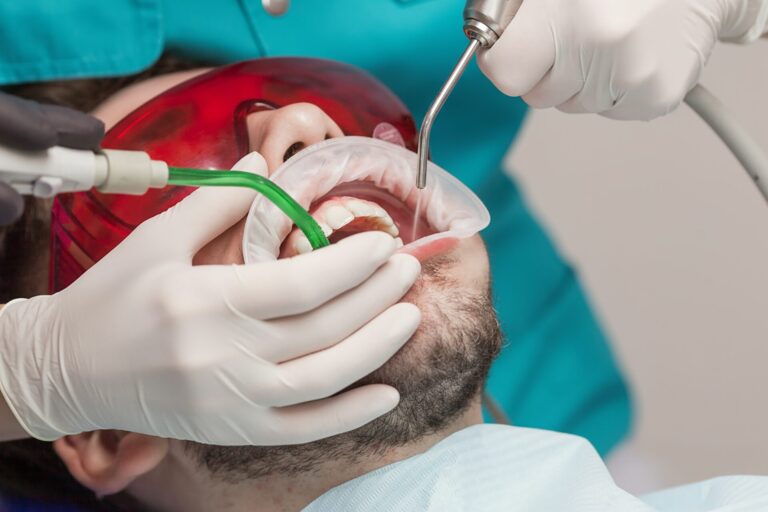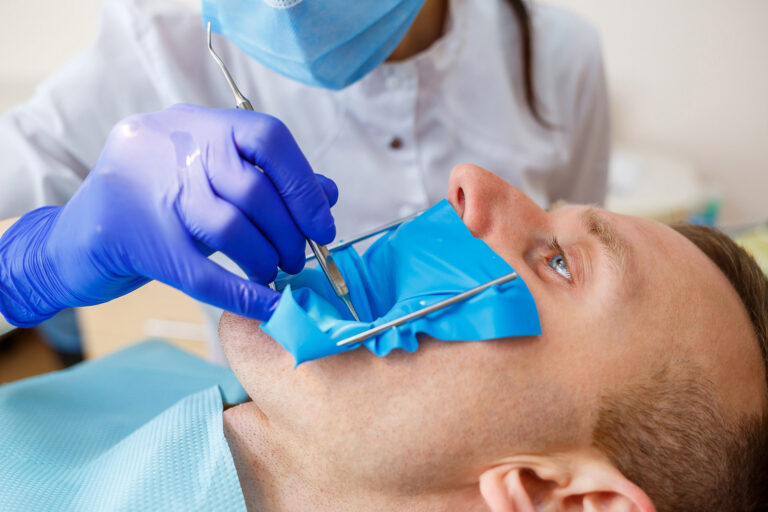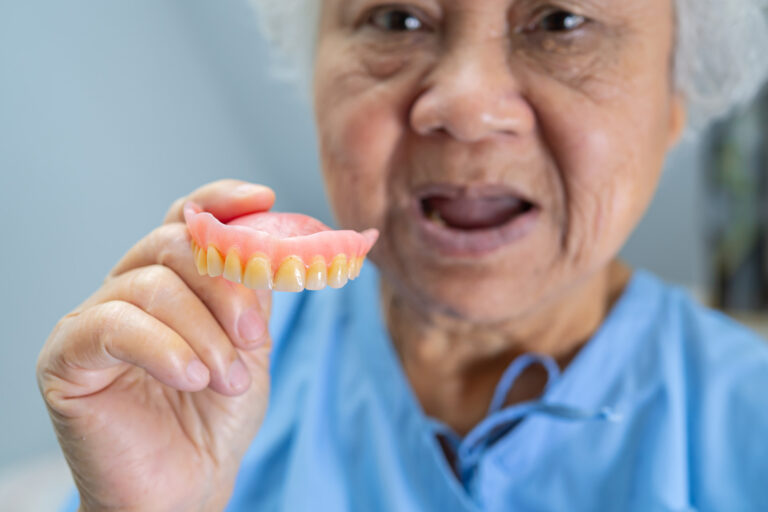What Are Swollen Back Gums?
If suddenly a simple meal turns into something painful, or you can’t shake that nagging discomfort right at the back of your mouth, you might have swollen back gums. This kind of issue, typically affecting the molars or wisdom teeth, affects many and stems from a combination of everyday habits and underlying dental problems.
It’s easy to dismiss swollen back gums as something that’ll pass, but figuring out why your back gum is swollen is the first step toward getting some relief and maintaining your oral health. Often, it’s your body’s way of telling you it’s battling something, such as an infection that’s just starting to develop.
Catching swollen back gums early can prevent things from getting worse. Ignoring it might lead to more severe consequences, such as losing a tooth or even affecting your whole body.
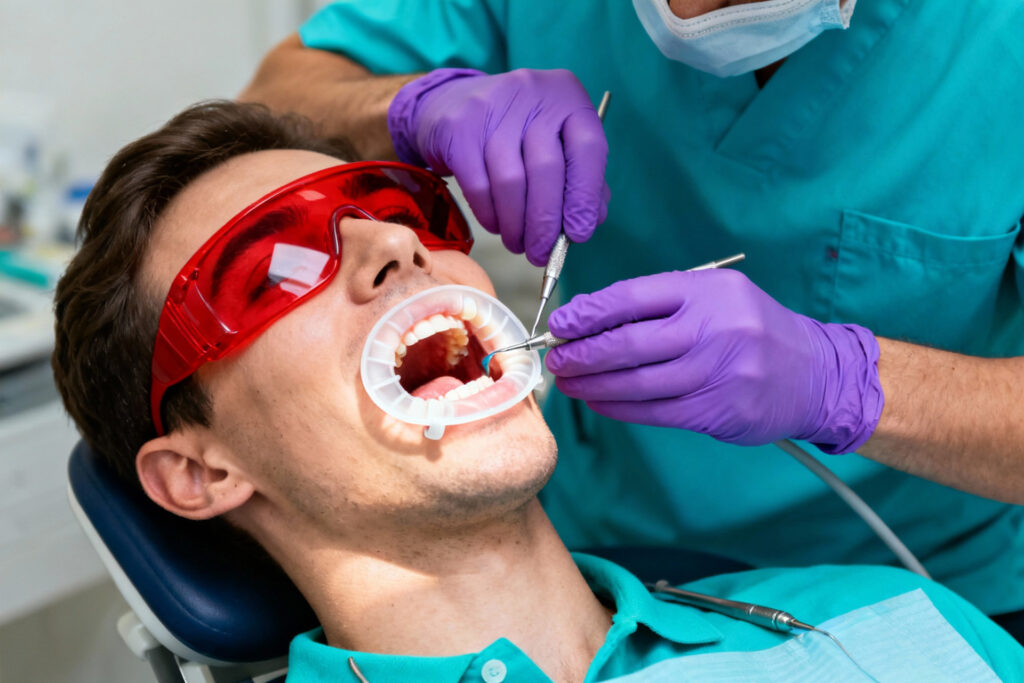
Why Is My Back Gum Swollen?
One condition that often accompanies swollen back gums is pericoronitis, an inflammation of the tissues around unerupted wisdom teeth. Those third molars show up in your late teens or early twenties, and they often run out of room in the mouth, creating a little flap of gum that catches food and bacteria right in the gums. That mess builds up, triggering an infection, and causes the gum at the back to swell and turn red. Factors such as stress, pregnancy, or inadequate brushing can also increase the risk of developing gum disease.
Gum disease also plays a significant role, contributing substantially to swollen gums in the back of the mouth. Both gingivitis and periodontitis are types of gum disease. When plaque hardens into tartar along the gumline, it irritates the surrounding tissues, triggering inflammation and swelling. Those back spots are at higher risk because flossing back there is more difficult, which allows bacteria to hang out and multiply.
Problems like these can escalate into serious issues, such as abscesses or even tooth loss. Folks who smoke or deal with hormonal shifts have it tougher, with what starts as a minor annoyance can drag on as a long-term problem. Inflamed gums are a key sign, often appearing red and swollen around the affected area.
Another possibility is a dental abscess. This occurs when an infection accumulates as pus near the tooth root or becomes lodged in gum pockets, typically resulting from untreated decay, an injury, or a cracked tooth. It leads to localised swelling that feels like a sore bump.
Back molars carry a significant load, making them vulnerable to cracks from grinding or chewing hard foods, which can allow bacteria to infiltrate. You may notice a bad taste or even a fever, which means you need to address it quickly to prevent it from spreading.
Failing to maintain good oral hygiene can lead to swollen gums in the back of the mouth. When you don’t brush and floss thoroughly, those bits of food get wedged in the cracks and irritate your gum tissue. Even a plain old popcorn kernel can cause severe swelling if it remains in place.
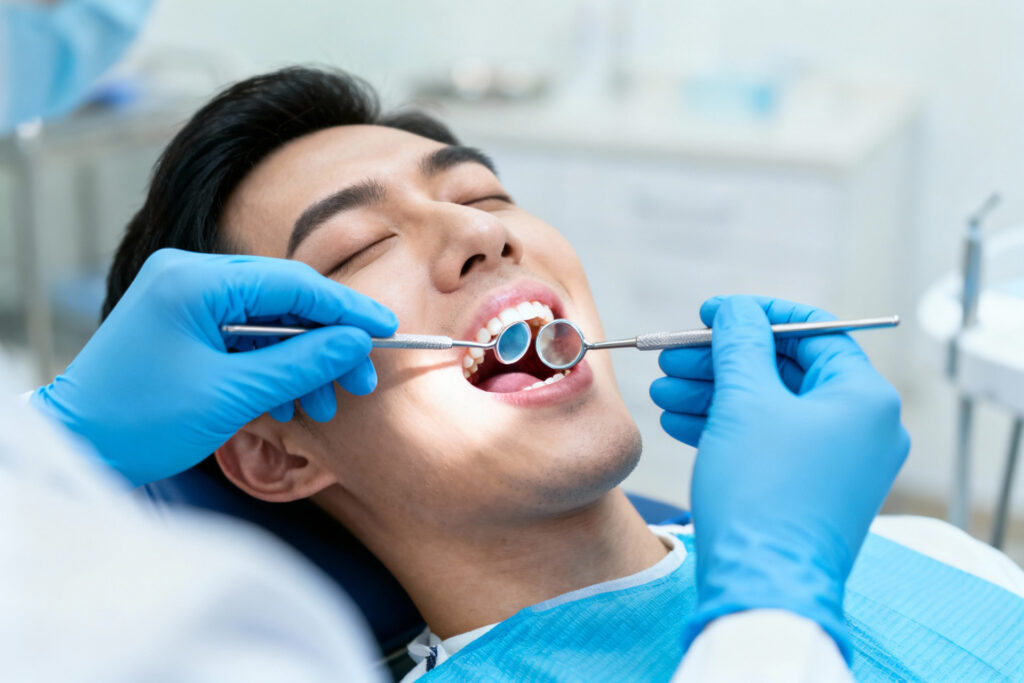
Stages of Gum Swelling
Gum swelling tends to move through stages. Early on, you may experience slight discomfort or notice a slight swelling, often associated with a wisdom tooth pushing through the gum or the area not being cleaned thoroughly enough. As the inflammation intensifies, the swelling becomes more pronounced, accompanied by pain, redness, and localised inflammation. That’s usually when you need a dentist to step in.
If you let it go, though, it slides into the late stage with intense pain, major swelling, and sometimes abscesses or the infection spreading out. This can put your mouth and whole body at risk.

Symptoms to Look Out For
Spotting the signs of swollen gums at the back of the mouth early can make a significant difference.
Besides the apparent puffiness, look out for redness or swelling of the gums, soreness when you touch them, or bleeding when you brush. That pain can spread to your jaw, ear, or neck, and you’ll often feel it in the mouth, along with trouble swallowing or difficulty opening your mouth all the way. In severe cases, symptoms such as pus drainage, fever, or swollen lymph nodes may signal an infection. Constantly bad breath or a metallic taste in the mouth are also signs that something is wrong.
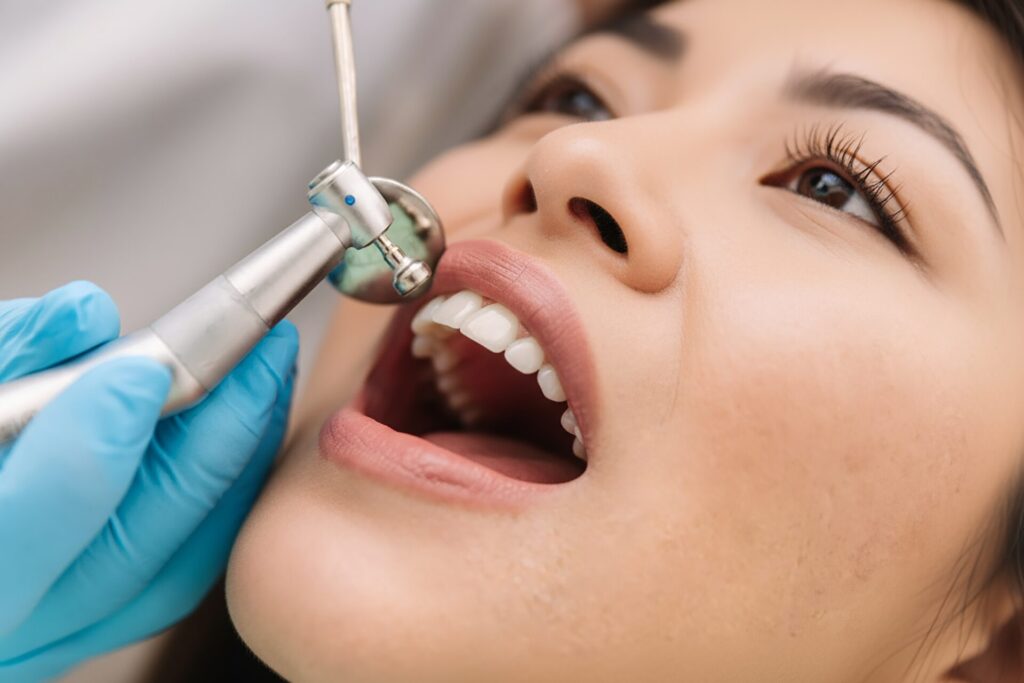
How Swollen Back Gums Are Diagnosed
Diagnosis begins with a dental exam, where your dentist takes a close look at the swollen gum around the back tooth for clues of infection or a foreign object. Your dentist might gently probe to measure pocket depths, and if the initial check suggests something more profound, they may use an X-ray to examine the underlying area and rule out cracks or abscesses.
Your dentist will take a swab to test for specific bacteria, which will most clearly assess the issue. From there, additional checks may be suggested, medication prescribed, or a minor procedure to address the problem may be recommended.

Treatment Options for Swollen Back Gums
For minor issues, you can use over-the-counter pain relief products, such as ibuprofen, to reduce the ache and swelling. Stick to gentle brushing with a soft toothbrush to avoid worsening the pain. In those lighter situations, the swelling may resolve on its own with home remedies.
If pericoronitis is the cause, your dentist will likely rinse the area to remove debris and prescribe antibiotics if an infection is present. They may also recommend a chlorhexidine mouthwash to help keep bacteria in check, though it may leave a temporary stain on your teeth or slightly alter your taste.
When the pain and swelling persist, your dentist may remove the gum flap or extract the wisdom tooth to address the swollen gum at the back of the mouth, all under local anaesthesia with minimal recovery hassle. If you experience ongoing swelling, severe pain, or a fever, consult a professional immediately, as an infection can spread to nearby tissues or even your bloodstream and become a serious issue.
For gum disease, scaling and root planing are used to remove plaque and tartar from below the gumline and smooth the roots, thereby preventing bacteria from adhering to the teeth. If it’s advanced periodontitis, flap surgery allows the specialist to reach further into the area, or they might perform regenerative work to repair lost bone.
Abscesses require prompt action, such as draining the pus, followed by root canal work to save the tooth or extraction, if the damage is too extensive. Antibiotics fight the infection, and pain control helps you through the recovery process. For cracked teeth, the treatment may involve bonding, a crown, or extraction, depending on the severity of the damage.

Home Remedies and Recovery
The length of recovery time depends on the severity of the issue. Mild swelling of the back gums from stuck debris might clear in a few days if you adjust your cleaning technique.
Home remedies work well, but they can’t replace a dentist’s support. Saltwater swishes, applying a cold pack to the outside helps reduce swelling, and steering clear of things like tobacco or spicy foods helps the wound heal.
After surgery, you can expect to take one to two weeks to heal. Keep an eye out for any worsening of symptoms during that time, as infections can develop if you don’t take precautions.

Prevention Strategies
Stopping swollen gums at the back of the mouth depends on good daily routines. Brush twice a day with fluoride toothpaste, moving in circles to cover the back spots, and gently focus on the gum line without applying too much pressure. Floss daily to clean between the teeth, and use an antimicrobial mouthwash for added protection. Have regular appointments with your dentist every six months to catch issues early and to receive a professional cleaning that removes tough tartar, which may cause infections.
Lifestyle tweaks can also make a difference in prevention. Stopping smoking improves blood flow to your gums, while a diet rich in vitamins C and D helps keep the tissues strong. Handling stress reduces grinding, which wears on the back gums. Drinking enough water also helps keep everything in your mouth hydrated. If you’ve got braces or dentures, tools like interdental brushes make it easier to clean around the swollen gum at the back of the tooth and along the gum line.
Some people are more likely to experience swollen back gums, including young adults awaiting the eruption of wisdom teeth and individuals with diabetes. Spotting those risks pushes you to stay ahead, and to book extra visits when hormones are shifting.

Get Help with Your Swollen Back Gums
Swollen back gums can stem from various causes, ranging from minor irritation to infections such as pericoronitis or gum disease that require prompt attention. Recognising symptoms promptly and knowing when to seek help is crucial for maintaining your oral health.
If you have a swollen gum at the back of your mouth or are wondering why your back gum is swollen, book a consultation with TEETH @ Tiong Bahru. Our team can create a plan to help restore your oral health to normal, maintain your mouth’s health, and help you regain confidence in your smile.
RELATED PERICORONITIS


